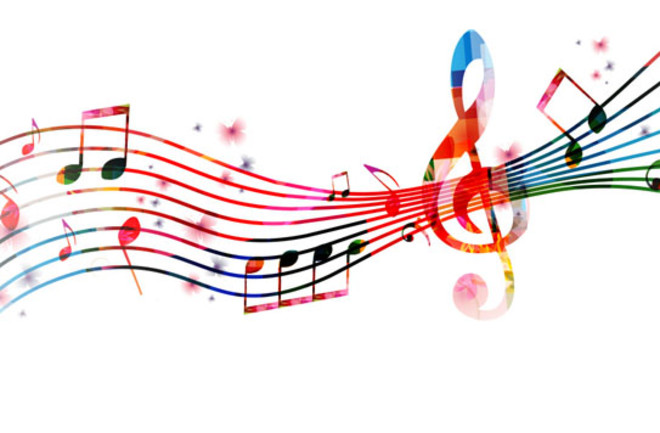Balance Your Being: Transformative Recovery Music for Inner Tranquility
Balance Your Being: Transformative Recovery Music for Inner Tranquility
Blog Article
Exploring Different Styles of Music: A Novice's Guide
In the huge landscape of music, different categories use a distinct trip right into the diverse tapestry of noise that exists worldwide today. Each category has its very own history, attributes, and effect on listeners, making the exploration of various music designs a gratifying experience. As we browse with the realms of symphonic music, jazz, rock & roll, world, and hip-hop songs, we reveal a rich variety of feelings, tales, and cultural influences that form the tunes we hear. Join me as we get started on a quest to untangle the complexities of these genres and discover the elegance that lies within each note.
Symphonic Music

The complexity and sophistication of timeless structures have astounded audiences for generations, evoking a series of emotions and showcasing the deepness of human creativity. From the fragile melodies of a solo piano piece to the grandeur of a full instrumental harmony, symphonic music offers a rich tapestry of sounds and designs that remain to reverberate with listeners worldwide.
In addition, symphonic music works as a foundation for several other styles, influencing the growth of songs throughout numerous societies and period. Its long-lasting heritage emphasizes the enduring power and relevance of this timeless art kind.
Jazz Exploration
Jazz, with its origins deeply embedded in African American traditions, is a genre that flourishes on spontaneity and individual expression. One of the defining functions of Jazz is its focus on improvisation, where artists develop songs on the place, commonly in action to the power and hints from various other band participants.
Another characteristic of Jazz is its abundant harmonic language, identified by intricate chord developments and prolonged consistencies. Jazz artists often explore harshness and unconventional consistencies, pushing the borders of standard songs theory. Additionally, Jazz positions a solid focus on rhythmic complexity, with artists including syncopation and polyrhythms to develop a vibrant and appealing listening experience.
Rock & Roll Trip

Starting the Rock & Roll Trip explores the rebellious spirit and electrical energy that have specified this category's development throughout history. Coming from in the United States in the early 1950s and late 1940s, rock & roll arised as a combination of various music designs such as blues, country, and gospel. With its origins in rhythm and blues, this category quickly got appeal, mesmerizing the younger generation with its energised beats and appealing tunes.
As rock & roll remained to develop, it became associated with rebellion and youth culture. Artists like Elvis Presley, Chuck Berry, and Little Richard became iconic figures, pushing boundaries and challenging societal norms through their music and performances. The impressive guitar solos, battering drums, and raw vocals came to be characteristics of the style, motivating generations of artists ahead.
Today, the spirit of rock & roll lives on, affecting a large variety of subgenres and staying an effective pressure in the music industry. Its heritage remains to form prominent songs, showing the ever-changing landscape of creative expression and cultural disobedience.
Hip-Hop Advancement

Hip-hop's evolution can be mapped through its 4 main elements: rapping (MCing), DJing, graffiti art, and breakdancing. These components create the structure of the hip-hop culture, with every one adding to the overall visual and message of the motion - MUSIC. Throughout the years, hip-hop has you can find out more branched out right into different sub-genres, such as gangsta rap, conscious rap, mumble rap, and catch songs, each providing an one-of-a-kind point read the article of view on the social issues and experiences of the artists
As hip-hop proceeds to develop, it continues to be an effective tool for activism, self-expression, and narration, shaping the social landscape for generations ahead.
World Music Discovery
Discovering the varied noises and rhythms of globe songs opens up a gateway to a rich tapestry of societies and practices. World songs incorporates a substantial variety of genres originating from different components of the world, supplying a distinct insight right into the musical heritage of various neighborhoods. From the thrilling rhythms of West African drumming to the soul-stirring tunes of Indian classical songs, each category within world music carries its own distinct appeal and background.
One way to explore the world music landscape is by exploring conventional folk songs from different regions. These tracks frequently reflect the everyday lives, beliefs, and experiences of the people within those cultures, offering a straight link to their customs. Furthermore, contemporary world music fusion blends conventional sounds with modern elements, developing an amazing blend of new and old.
Conclusion
In verdict, discovering various categories of music allows individuals to widen their music perspectives and appreciate the diversity of sounds and styles that exist in the globe. By diving right into symphonic music, jazz, rock & next page hip-hop, roll, and globe music, listeners can gain a much deeper understanding of the historical and social impacts that shape each genre. MUSIC. Welcoming a range of musical styles can improve one's musical experience and foster a better recognition for the art form overall
As we browse via the realms of timeless music, jazz, rock & hip-hop, world, and roll songs, we uncover an abundant range of feelings, stories, and social influences that form the melodies we listen to.Classic songs, admired for its intricate structures and timeless elegance, holds an unique area in the history of songs. From the enchanting rhythms of West African drumming to the soul-stirring tunes of Indian classical songs, each genre within globe music brings its own unique beauty and history.
One means to delve into the world songs landscape is by exploring typical people songs from different areas. By diving into classic music, jazz, rock & roll, world, and hip-hop songs, audiences can gain a deeper understanding of the social and historic impacts that form each style.
Report this page